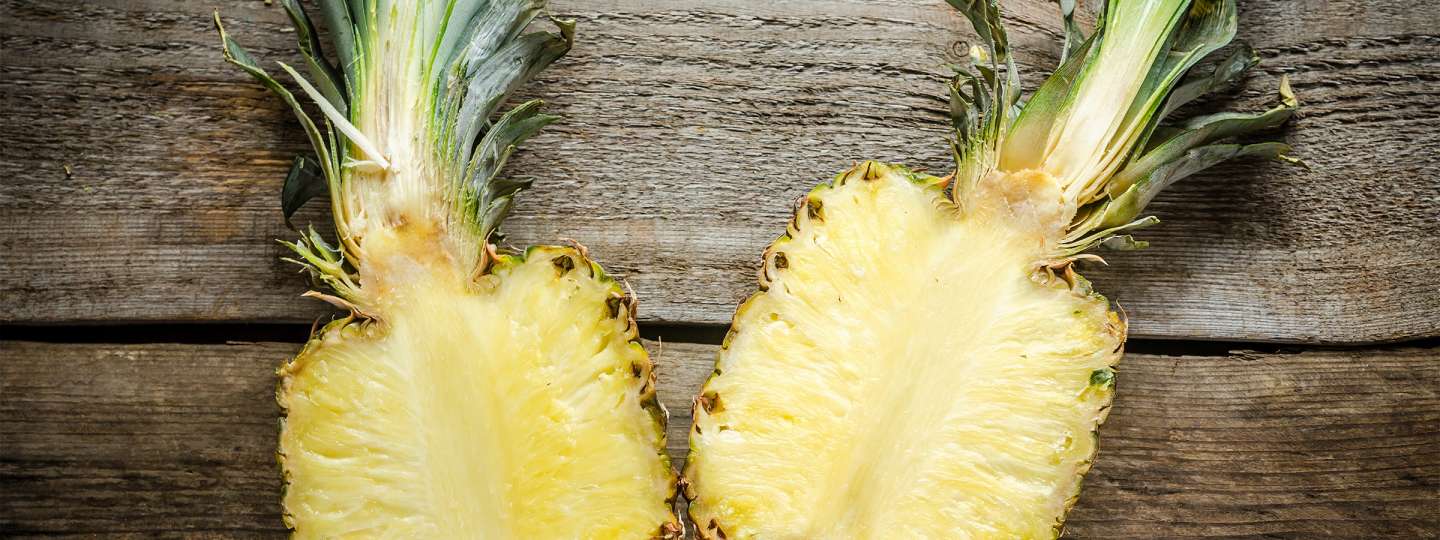GMO and Non-GMO FAQs
What are GMOs?
GMO stands for genetically modified organism, and is also referred to as GE (genetically engineered) and GM (genetically modified).
Genetic modification utilizes gene splicing to overcome natural laws governing breeding. GMOs are organisms whose genetic material has been altered by modern genetic engineering techniques that cannot otherwise occur in nature, rather than by traditional cross-breeding and hybridization.
For example, genes from different species can be combined to create agricultural products that are more resistant to certain external factors such as herbicides, fungi, and pests, or that have other purported benefits over their natural counterparts.
While genetic engineering promises higher crop yields, more nutritious foods, and environmental benefits, these claims remain controversial and more research is needed to gauge the true value and long term impact of GE crops and GM foods.
Why are GMOs controversial?
There are a number of different reasons that GMOs continue to be controversial.
Agricultural issues
Ecology – Some GE crops are designed to require the use of higher levels of agricultural chemicals that cause loss of natural habitats and pollute the environment.
Monocropping – A lack of biological diversity not only reduces natural habitats, but may lead to higher risks of crop failure; this was a major contributing factor to the Irish Potato Famine in the mid-19th century.
Unintended consequences – Some GE crops have reportedly had major, unintended issues, the most prevalent of which is loss of protection from various damaging factors such as drought, insects, soil pests, changes to plant structures, etc.; some of these have been documented in peer-reviewed scientific journals.
Additionally, GMOs can be a threat to organic foods since there is often pesticide drift from spraying in adjacent fields, or accidental co-mingling of organic and GMO crops, which can ruin the organic status of those crops.
The development of “super weeds” that become resistant to the herbicides used with GE crops is an effect similar to the antibiotic resistance developed by microbes, where an increased tolerance to a chemical is developed after chronic exposure, ultimately leading to loss of efficacy.
Environmental issues
Pollution – High levels of agricultural chemicals can pollute the water table and may also leave more residue on crops. Recent studies indicate that the rate of agricultural chemical use has skyrocketed, as well as a steep increase in the planting of certain GE crops specifically bioengineered to tolerate higher levels of these chemicals.
Toxicity – There is evidence that chronic exposure to even low levels of agricultural chemicals, below acutely toxic levels, may cause neurological and hormonal damage to children. Many GE crops were designed to be grown along with highly estrogenic herbicide use, raising additional concerns about harmful hormonal effects on humans and wildlife.
Water use – GE seeds may require higher amounts of water to thrive than do some traditional varieties.
GMOs aren’t natural – Since GMO crops are not naturally produced, GMO-containing foods are shunned by natural foods advocates. Foods claiming to be “natural” are being challenged on their natural status if they contain GMOs.
Nutritional issues
Allergies – A study on the relation of GE foods to allergies hypothesized that some GE foods can cause food allergies due to two main factors: possible negative effects on digestibility and potential novel or altered proteins created by the GM process. Unless the crops are fully tested to assure safety, including the absence of potential allergens, their true safety in this regard will continue to be questioned.
Nutritional Values -Some researchers have reported higher levels of anti-nutrient compounds and lower levels of nutrients in certain GMO crops than comparable conventional crops. This illustrates the need for thorough testing before GMO crops are widely grown and consumed as food.
Safety issues
Most currently planted GE crops are designed to encourage higher rates of agricultural chemical use. Adaptation to herbicides and pesticides by weeds and pests also encourages greater use of these chemicals by farmers. Many of these chemicals are estrogenic or have other potentially serious effects, especially in children.
The reported increase in anti-nutrients in some GMO crops can impede digestion and possibly lead to increased incidences of food intolerances or allergic reactions. Like gluten or food allergens, it is possible for people to have a reaction to these substances. Unlike gluten and common food allergens, there is a lack of GMO labeling that will hinder the identification of these kinds of problems in people consuming foods that may become immunoreactive to them.
Concerns about different epigenetic effects (gene expression in response to environment) for GMO foods versus conventional foods are just emerging, with implications for disease risks, including cancer.
Safety data for GMOs is in private hands and closely held, typically without adequate peer-review to fully assess safety. Researchers have complained that seed companies require farmers to sign agreements limiting the use of their seeds in research and giving the company veto power over publishing finished research.
The failure to conduct long-term animal feeding studies to assure safety underscores the potential risks without resolving them.
Social justice issues
Lack of transparency – In 1992 the Bush administration made a policy decision giving guidance that GMOs were not substantially different from conventional crops. Since then the federal government has accepted most GMO crops, typically without requiring labeling or extensive safety testing.
In addition, the U.S. FDA has stated there are no significant differences between patented, genetically engineered foods and non-genetically modified foods. This has been very controversial, especially since only novel products can be patented. The controversy brought about a growing demand to restrict GMO crops, as well as to accurately label foods containing GMOs.
The ability of seed companies to restrict the publication of research using their patented seeds is another reported transparency deficit.
Monopolies – Use of patented seeds comes with severe restrictions. Farmers can be prohibited from saving seeds to replant next year’s crop. It can be more costly for farmers to use patented seeds since they must buy both seed and specialized agricultural chemicals necessary for growing pesticide-resistant crops.
The ability of seed companies to prevent the publication of studies that they don’t like, using their patents to license rather than sell seeds to farmers, means that consumers and scientists alike are deprived of the independent data needed to properly determine the safety and nutritional profile of GM foods using impartial scientific methods.
The handful of companies controlling today’s GE seeds, some of which also produce the agricultural chemicals that the seeds have been reprogrammed to resist, have concentrated much of the world’s agricultural destiny into just a few pockets.
Religious and other dietary restrictions – How does one faithfully follow dietary rules, such as kosher, vegetarian, and others, if the genes of different species are intermixed without labeling? Fish genes have been placed into tomatoes, for example, and genetically engineered salmon is now a reality.
Unexpectedly different nutritional values can also confound people on restricted diets, especially since new GM foods typically aren’t required to be tested for nutritional equivalence before coming to market.
When did GMOs become common and what are the most likely GMO crops?
The biotechnology industry and GE crops started flourishing in the 1990s. These types of organisms can have genetic material from a variety of sources that has been altered by genetic engineering techniques:
- Bacteria
- Fish
- Insects
- Mammals
- Plants
- Yeast
During the past two decades, the number of crops grown by GE methods in the United States has been slowly increasing, and commercially available crops now include some varieties of these plants:
- Alfalfa
- Canola (low erucic acid rapeseed)
- Corn (including sweet corn or popcorn)
- Cotton
- Papaya (Hawaiian)
- Potatoes (Simplot White Russet™)
- Soy
- Sugar Beets (not red beets)
- Summer Squash
Additionally, other plants of concern where GE versions are being developed but not yet commercially available include:
- Beets and chard
- Chinese cabbage and related plants
- Flax
- Rice
- Wheat
- Winter squash (acorn, delicate, patty pan)
Fortunately, this is a limited list and most of the various food crops today are still not subjected to genetic bioengineering, and therefore do not contain GMOs. Organic crops do not allow GMOs to be used in their production; certified organic crops are monitored by auditors to assure that they’re non-GMO and don’t use conventional pesticides.
What is the difference between non-GMO and GMO-free?
This is actually a very complex and controversial question. Obviously, a product produced without GE would be non-GMO, right? But cross contamination at any step between the farm and the end consumer can introduce GMOs to a product. Also, a product could be processed to the point that GMO testing cannot detect any GMOs, but still lack documentation that it was produced without GE. In a case such as this, one would not be exposed to GMOs by eating that food but it might not be non-GMO sourced.
Until a single federal standard is in place regulating manufacturers’ use of these terms, consumers will not be able to understand or compare claims of products being non-GMO or GMO-free.













